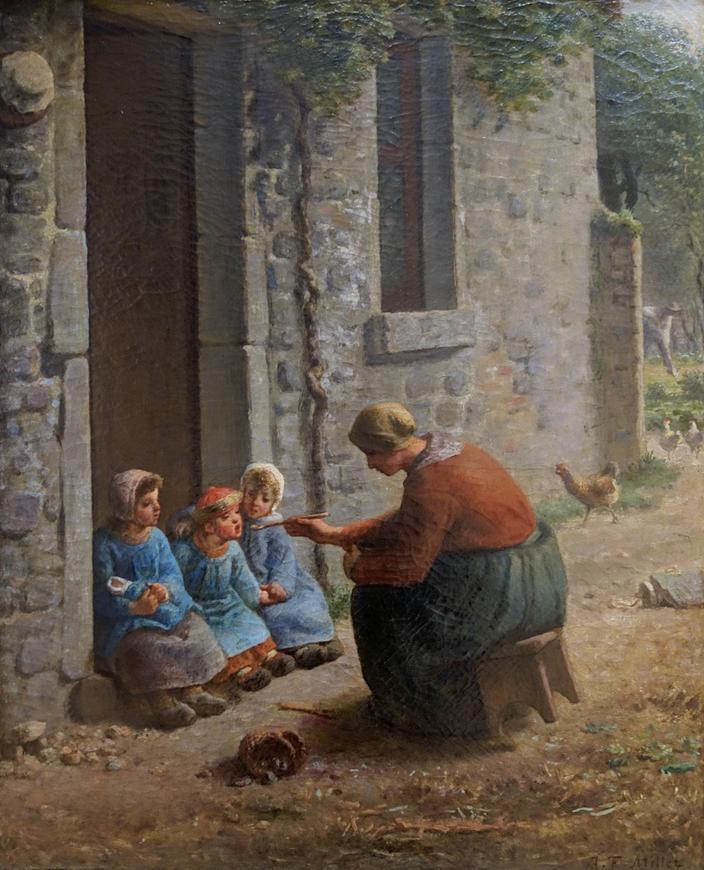By choosing the theme of rural life, Millet follows the Naturalist movement, which valued a direct and realistic vision of nature and the peasant world. The artist was fascinated by the fierce struggle of country men to ensure their subsistence and that of their family. But this life of toil is depicted without pessimism. On the contrary, the scene conveys great tenderness.
The monumental silhouette of the crouching mother is somehow reassuring. The harmony of blue and green tones brings freshness and joy. The light that floods the garden and brings the foliage to life appears almost Impressionist.
From a family scene, Millet calls back to a universal symbolism: that of the communion between man and nature.
Though the artist had been living in the countryside of Barbizon since 1849, he did not paint from life. Millet used sketches created on the spot, but executed his compositions from memory, keeping only the essential. In sacrificing the anecdotal, he valued the universal and the permanent.
The museum also houses several preparatory drawings for this painted work.

By choosing the theme of rural life, Millet follows the Naturalist movement, which valued a direct and realistic vision of nature and the peasant world. The artist was fascinated by the fierce struggle of country men to ensure their subsistence and that of their family. But this life of toil is depicted without pessimism. On the contrary, the scene conveys great tenderness.
The monumental silhouette of the crouching mother is somehow reassuring. The harmony of blue and green tones brings freshness and joy. The light that floods the garden and brings the foliage to life appears almost Impressionist.
From a family scene, Millet calls back to a universal symbolism: that of the communion between man and nature.
Though the artist had been living in the countryside of Barbizon since 1849, he did not paint from life. Millet used sketches created on the spot, but executed his compositions from memory, keeping only the essential. In sacrificing the anecdotal, he valued the universal and the permanent.
The museum also houses several preparatory drawings for this painted work.